Chella Man Has Found His Joy

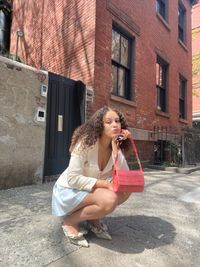
Intersections is a feature column that profiles creatives inside and outside the fashion industry. Each story is meant to illuminate how fashion, identity, art, and culture play a critical role in inspiring and informing the work and lives of some of the chicest people we know.
What brings you joy? Some may find it in serendipitous moments like finding a secondhand designer bag. Others secure it when they finally book a vacation or may channel it through creating art. For Pennsylvania-born artist Chella Man, it's the latter. While cultivating happiness through creative mediums may seem like a frivolous matter, that's far from the truth. For many marginalized communities, art can be a beacon of hope in the darkest times, a form of protest, and a sliver of joy in a world that tells you you're unworthy of having it. In many ways, this idea feels essential to the essence of Chella Man. Art in all its forms has shaped Man's very being, so it only makes sense that he'd build a career dedicated to it (a successful one at that).
Man first began to explore his relationship with art—and himself by proxy—at a young age. The world has gotten to know him as a model, director, activist, actor, artist, and art curator over the past few years. The multi-hyphenate creative gained recognition when he began sharing his experiences as a deaf transmasculine person on YouTube. Don't be mistaken, though. Man can't be put in a box. He has made history multiple times by being the first deaf Jewish Chinese American transmasculine person to be cast in DC's superhero series Titans and securing his first modeling contract with IMG. He hosted a TED Talk, wrote an autobiography, and was recently named an ambassador for Nike. Basically, Man is out here doing the work and setting the framework for future generations, and his most recent project is icing on the cake.
Man has curated his first group exhibition of 14+ disabled artists in New York City titled Pure Joy at the 1969 Gallery that's running from June 30 to August 14. The exhibit is dedicated to exploring what it means to center pleasure over pain, especially when the world at large associates your very existence with the latter. Once again, art proves to be a powerful form of resistance, but you don't have to just take my word for it. Ahead, you'll hear from Man himself about what it was like to bring the project to life, the importance of cultivating joy, and, of course, what role the arts have played in his life.

What many might not know about you is that you're an artist, curator, actor, writer, model, and advocate—being that you're so creative, what role do you feel the arts at large have played in your life?
I believe art is inextricable from my life. I define art as the creation of something from anything, and that's something I've had to do my entire life. I've had to build that framework for my own life because there's been no blueprint for being a deaf, transmasculine, Chinese Jewish individual, especially where I grew up. There was a great scarcity of seeing that level of multifaceted identities when I was growing up, so the idea that people can find beauty within the lack of framework and create it for themselves drew me to art as a child. Without having the language to articulate my identity, I was trying to find a pathway and guidance, and there was none. And art is similar in that way. There's no specific, set way one should make art. There's no framework, and you're creating everything from nothing. And I love that because that's what I've been doing since I was young—existing in a world that diminishes the value of our very being is art.
Most artists choose to channel their creativity into one medium. What compelled you to create a career dedicated to using multiple mediums to speak up?
In terms of mediums, when I was younger, I didn't even realize these categories existed. In the same way, I didn't realize there were all these political categories like gender, sexuality, and racial identifiers. I didn't know that people separated photography, painting, and films—that they "had" to be different. I have never operated within that framework, and I've never succumbed to the pressure to conform. Why would you limit yourself? I've never understood that. You don't need academic training or an expensive camera to be able to take a photo or create any other art form for that matter. I've never tried to limit myself or my craft, which has allowed me not to feel so confined to what other people believe. Unfortunately, art and identity can sometimes become confined because of language. It all goes back to linguistics and the way we categorize things. We believe so deeply in binaries, whether that's gender, sexuality, race, or even just what's good or bad art. We aren't always permitting ourselves to draw outside the lines. We don't ask ourselves, What if I don't even claim any identity and I just like to allow myself to be free without the framework? So that's always been something that I'm challenging with my work, that I'm moving away from the labels and just being an artist and using whatever medium works best to convey the message I'm trying to convey.
You're a multi-hyphenate in every sense of the word. How has your relationship with your identity evolved as you've aged? How have you been able to not place yourself in a box both creatively and with how you perceive yourself?
When you're born, you always know who you are, but to know who you are while living in this world is different than knowing who you are on a soul level. This world operates in so many cycles and has many systems of oppression that we must watch out for ourselves as best as possible. We must try to keep intact that part of ourselves while operating within a capitalist system that's ingrained with transphobia, ableism, racism, and misogyny. So at first, I felt like I always knew who I was, but I didn't have the language to articulate it. And that's the beauty of speech, but it is also the perils of it. Once I learned how I wanted to articulate my existence, I knew I had to make a lot of sacrifices to communicate and hide parts of myself to stay safe. And now, as an adult living in New York, I've had to unlearn many survival mechanisms and learn the full history of that language. I found my community through language, but I've also been able to discard the language that doesn't serve me. It's a balance of understanding the importance of language and the extent to which it can help you.
You spoke in your TED Talk about how finding the term "genderqueer" was transformational for your transitional journey when you were younger. Why do you feel it's pivotal for younger generations to be able to learn about identity and sexuality?
I think we should talk about the extent to which language is helpful and, at times, empowering. We should be teaching all the ways everyone can identify on the spectrum because people should be aware of how many choices they have in life, and they should be able to discard them altogether if it doesn't work for them. In school, at least where I went to, it was always like, "This is the right way, and there's no other way." But that's not the truth. There's no one right way—just like there's no single way to describe our identities.
Language and art are powerful tools that can be used as empowerment, and that's something you've been exploring through a group exhibition entitled Pure Joy. What compelled you to put this project together? And what has it been like to bring it to life?
I have been asked so much about my trauma and my struggles, especially regarding my disability. But I can't recall a time when I've been asked about when I feel happy or when I feel joy. So seeing that the world wasn't presenting the opportunity to talk about pleasure, I decided I would make it. I wanted to create this space in the art world for disabled people first and foremost but [also] for disabled people to create something that gives them joy, whatever that is. And it's been so healing to put this show together. There are so many incredible disabled artists involved in this exhibition that not only have a wide range of disabilities, but they're all just so complex and varied in their identities, age, where they live, and where they're at in their careers. It's been beautiful to witness how people define joy and find it through the process of creating and interpreting literal language.
What is it like to hold space for those artists to have that exploration into joy and to start defining it for yourself?
It's been hard, to be honest. Because I'm not asked about joy, I haven't thought about it much. Neither have many of these artists. I don't want to speak for all of them, but when it came to this theme, some were unsure what to do, and I think it almost broke my heart. As I was rolling out this project, I realized how rare it is for this community to be asked to focus on pleasure rather than pain. In some way, I think it's shifted the lens on some of their art. As disabled artists, we're often tokenized in the industry. We don't get to make that kind of art. We often don't even get to be mediocre or to create and not have a lens put on it, to have it just exist because it's aesthetically pleasing or for joyful purposes. It's a privilege many marginalized people, not just disabled people, don't have when creating.
Do you feel it's one of those things where, as a marginalized artist, you have been told how you're supposed to create to succeed, so being given that freedom to make things without frameworks is overwhelming?
The dominant mainstream audience wants to hear about our suffering—they think that's all we exist for. But we live for so many more reasons. This gallery show is, first and foremost, for disabled people. But if non-disabled people come (which I hope they do to support it), I hope that it opens up their eyes to the complexities of being disabled, therefore [humanizing] more of these artists.
What I love about your work is that you very much do use it as a tool to dismantle the stigmas around being disabled—particularly with your self-produced short film The Beauty of Being Deaf. How did that project come to life for you? And what was it like to partner with Private Policy for that project to create one-of-a-kind ear jewelry that can be worn with hearing aids?
It was so fun. I had the idea for that short film since middle school. I wanted to prove how beautiful it was to be deaf because people don't see that. But I never had the resources or the means or even the community at the time to do it. There weren't any deaf people in my life until I left Pennsylvania, so it became easy when I finally had community and the funds. Even though so many things could have gone wrong that day (our entire cast had to drive through a full blizzard to get to our shooting location during COVID-19), it was just a pure joy to create it and felt like a day of hanging out and healing. And being able to work alongside friends like Siying Qu of Private Policy (one of my closest friends and such a gem of a person) to bring together this film I had imagined when I was younger was surreal. Being able to show how beautiful it is that we as a community can express ourselves even underwater in this visual, almost dance-like way while performing a slam poem is something I'll cherish forever.
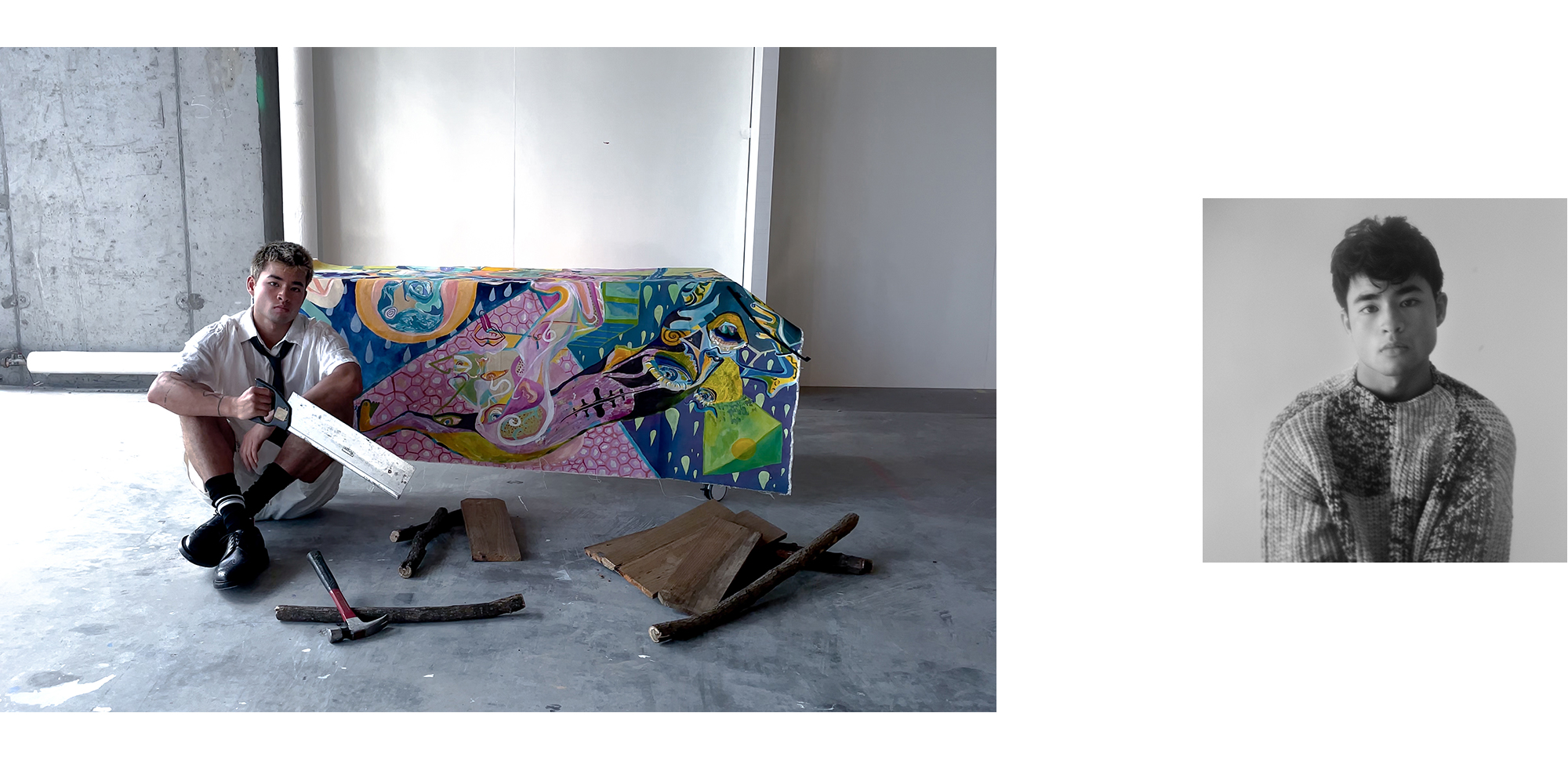
Art and language are significant parts of your life, but what role has fashion played in your life?
Fashion, to me, is just this way of experimenting with external expression, which is so interchangeable with gender for me. To be able to take material objects and have them influence the way you're being perceived is so powerful. It's such an art form. Throughout my life, there have been traumatic moments where I've been forced to wear material objects, like a dress or skirt, to stay safe in different spaces. So to be able to reclaim that now in New York City and dress the way I want to has been another facet of pure joy—mainly because there was a time in my life when I didn't know if I'd ever feel connected with my body, first of all, much less the clothes on it. So to have that freedom to experiment and test out how I feel in my body with different garments on but how it changes and shifts the way I'm being perceived is mind-blowing. There are so many ways clothing challenges the binary—through gender, of course, but also through what's seen as "professional" and code-switching in different cultural settings, so there's so much to unpack in fashion. Unless we all walk around naked, the material we choose to wear on our bodies will always influence people's identities.
In addition to your own relationship with fashion evolving, you have helped the industry at large change by making history as the first deaf and transmasculine model to sign with IMG Models. What was that moment like for you? And what do you hope people will take away from your modeling career?
I'm with a smaller modeling agency now called Community, but signing with IMG Models when I was 17 years old was mind-blowing. I honestly did not know a lot about fashion or modeling because I grew up in a small town in the middle of Central Pennsylvania. So coming to New York and then being signed very quickly, [I] don't think I fully understood how pivotal that moment was to many people and my community. I knew it was a huge deal because of the way other people were reacting around me, but I didn't fully understand it until now. I'm still processing and digesting how beautiful that moment was and how much pressure it was to put on someone so young. American culture is so steeped in individualism, and when the first media reports were made about the signing, they focused on me rather than the moment itself. I don't really agree with exceptional individualism, and I hope that moment served as a way for the door to open wide for my community. I hope that people don't think I'm the only one in the industry. There are so many of us out there trying to get in, and I want the narrative to be that. I'm so deeply appreciative of the platform modeling has given me and my time with IMG models, and I hope that when people see me they understand I'm one of many.
Tokenism is rampant within multiple creative industries. Do you think the future of inclusivity is understanding what you said earlier, that there's more of us than just one person and that our aim should be bringing everyone into the room?
I can't say for sure, but I believe that's what so many of us are fighting for inclusivity and moving forward with so much passion and fire. We are inevitably heading that way because of how we are as humans. We are undeniably complex. Historically, we've been so limited and boxed into so many different binaries that aren't natural. What's natural is just to allow people to expand, explore, and be curious as human beings and enable our work and workspaces to reflect that expansion. Inevitably, we are going to become queerer. We're going to become more inclusive and accessible because we have to be. That's who we are as a society, and denying that change is to deny our own humanity.
I feel like your career has been opening doors in many ways. For example, in addition to being an advocate and an artist, you're an actor who made history as the first-ever transmasculine actor to be cast in a DC superhero series. What was that moment like for you?
It was an incredible experience all-around. I had no prior acting experience. It was the first audition I ever had, so it was definitely a crash course, but I learned a lot. And it was a dream come true because I had always watched superhero shows with my dad growing up but felt that sign language on-screen was just so cringy because it wasn't coming from someone fluent in ASL, so they often spoke in an almost robotic-like fashion. Being able to authentically represent sign language through the lens of being a superhero was such a deep pleasure for me.
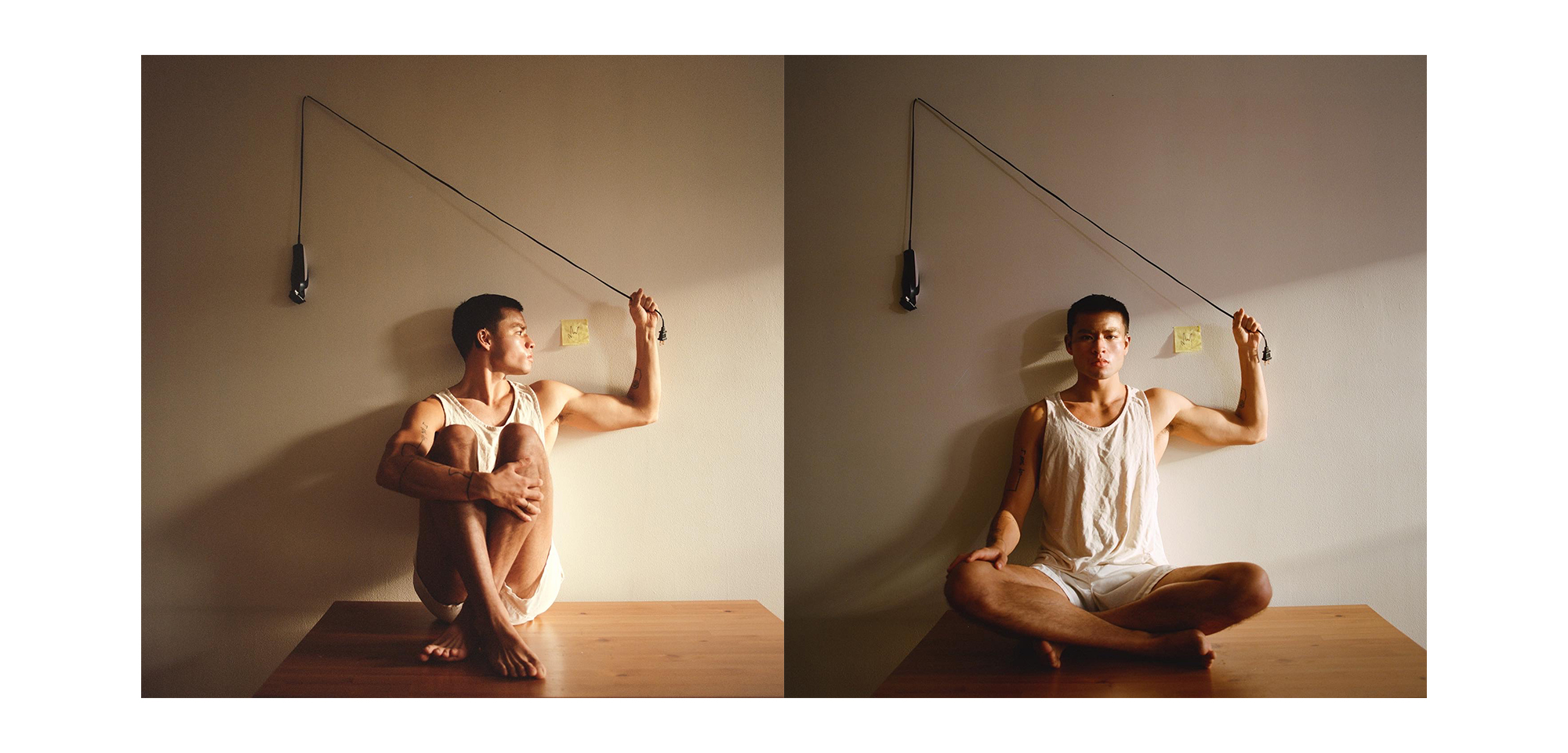
You released your first book, Continuum, in 2021. What was it like to write that book? And why did you feel it was important to explore gender, sexuality, activism, and intersectionality in your autobiography?
It was heavy because I wrote it during the pandemic, which at the time was a blessing because we had so much time to create. But I also wrote it in my childhood bedroom, where I experienced a lot of discrimination, trauma, and suffering in my early life. So I tapped into memories that I wouldn't otherwise have been able to tap into, and it was tough to be in that space and to continue on. Many of the pages from Continuum are straight from my diaries because I wanted to bring some of that youthful mindset because it's supposed to be for kids, like a younger audience. I wanted to understand what I was thinking as a kid to be able to write to kids themselves, and while it was arduous to unpack and simplify, it was really beautiful. I realized that things that I thought were so complex aren't really. Whether grappling with emotions or history, things can be simple if we just lead with love and compassion.
Do you feel you've evolved your relationship with language in writing this book? Have you removed a lot of the heaviness around language and just been able to interpret it for yourself?
I think it depends, you know, on the situation. I think we should talk about how language is helpful and, at times, empowering. We should be teaching all the ways everyone can identify on the spectrum because people should be aware of how many choices they have in life, and they should be able to discard them altogether if it doesn't work for them. Language has become very desensitized, especially when I'm having continuous conversations about transphobia, the murder of Black trans kids, and all the different genocides happening worldwide. I've been able to compartmentalize in specific scenarios, but it's still heavy, and many emotions are still involved. I think the more I've become aware, the more I've come to see how language can fail us, and sometimes, we just have to give in to our emotions and feel whatever we need to feel—whether that's forgetting what terms society feels we should define ourselves as and going with what we feel inside or taking a moment to cry, scream, or feel angry about the state of the world.
Right. I think it goes back to the question of, How do you find joy for yourself when that much suffering surrounds you? How do you cultivate joy for yourself when you're weighed down in that heaviness of grief?
The beauty of working on this exhibit is that it has inspired me to explore how I find joy in my day-to-day life. And I've found that taking time to center myself and meditate daily has helped. I never thought that sitting still was something I would do (because I really couldn't do it before), but something changed, and it's been incredible. You really do have the answers to your questions inside, and you can find them when you sit with yourself. Yes, it can take a long time—months even—but you start just to learn your body and learn your mind more. When you allow yourself to be bored, I think that's when we find joy. I've also found joy through being intentional about who I'm socializing with. When I'm in the community, I'm not expanding my energy to explain or advocate for myself. I can just be content and feel safe and at peace. That's what joy is to me.
Additionally, I think finding time to play in our lives is a way to cultivate joy. I think people often incorporate play into their adult lives as something sexual. It can be that, but it can be so much more than that. It can be playing basketball, taking cooking classes, or painting for yourself. There are many avenues to make time for joy. And I've learned that you can find joy beyond fleeting moments, which is exciting because it's not something I used even to know I could feel.
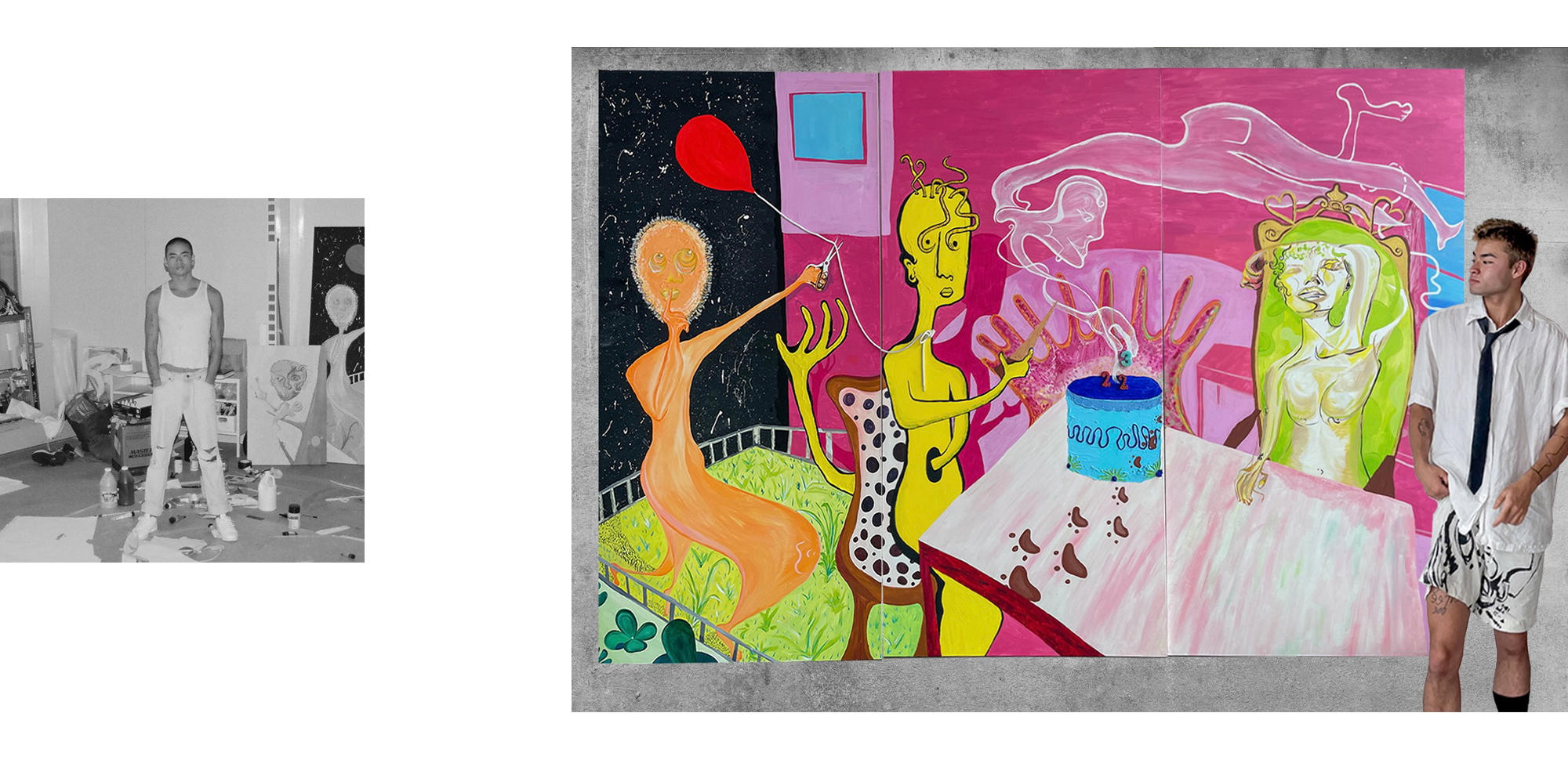
Speaking of making time to play sports, you were just named an ambassador for Nike—how did that come about? And what are you most excited about in working with such an iconic brand?
It has been surreal. We're trying to create spaces for queer, disabled, and BIPOC people to play sports, and this next year, we'll be making a lot of different campaigns and internal initiatives to give more space to that. And it's so important to me because being a deaf, queer person of color (I wasn't out as transmasculine at that time) growing up in predominantly white spaces, I came across many obstacles with accessibility in sports. And sports are something else that kept me grounded in my body. They were such an essential part of my adolescent life, so I felt compelled to reach out to Nike. A friend shared an internal contact at Nike. I made this huge deck of ideas for them. They loved it and were very supportive. I never imagined a company like Nike would listen, but we're now working on fostering different community conversations and initiatives, and it brings me immense joy to work with them.
Sports are an essential part of many children's childhoods, and it's been awful to watch 18 states pass laws to ban trans children from participating in them. How have you been able to not let that news impact you negatively? And how are you using the Nike platform to speak up against transphobia?
It's impossible not to let that news impact you, but you can manage the feelings that come from it. So it's been a lot of that and also giving myself the time to feel and heal. I'm aware more than ever that you need to be disciplined and block out time for your healing like you're disciplined with yourself in carving out time for other pursuits. But I also think the key is to do whatever you can to help, so I personally just got back from Nike's headquarters in Beaverton, Oregon, and they were holding a transgender summit for kids. I spent the whole time speaking with kids and their parents about how they feel about these laws, what they want to change, and their hopes and dreams. I'm doing everything in my power to help these kids feel safe and feel free in the places that they live because they're from all over the country. And to be able to hold that space for them is beautiful. I've been lucky enough to directly work with trans kids. While the advocating I do online is essential, it doesn't feel human at times just to post online and interact with other humans just as their usernames. There's something powerful about putting down your phone and talking to the person in front of you.
You've spoken about how you didn't have the framework to look to someone to help you define a life for yourself when you were younger, so what was it like to hold that space for those kids?
It was so stunning that they not only knew that they were trans but had the language to express their identities. On top of that, they could do it and had family support them and flew them to a Nike summit. The fact that they were even present in their skin, feeling connected to what they were wearing and who they are at such a young age, made me realize we are making progress. Even though it doesn't feel like it at the time (especially with [nearly] 240 [anti-LBGTQ] bills being [filed] across the country), we are moving forward. Visibility is a blessing and a curse at times. We're seeing the rise of transphobia and anti-LGBTQ+ sentiment because people see how younger generations are building a life that brings them joy. And meeting them, this next generation, gave me so much hope.
What do you hope younger generations take away from your work?
At the very root, I just hope that people can understand they should allow people to be who they are. It really can be that simple. If we can do that, I think we'll all be able to find our very own sliver of joy.
Next: I'm an Art Gallery Owner, and These Are the Wardrobe Staples I Swear By
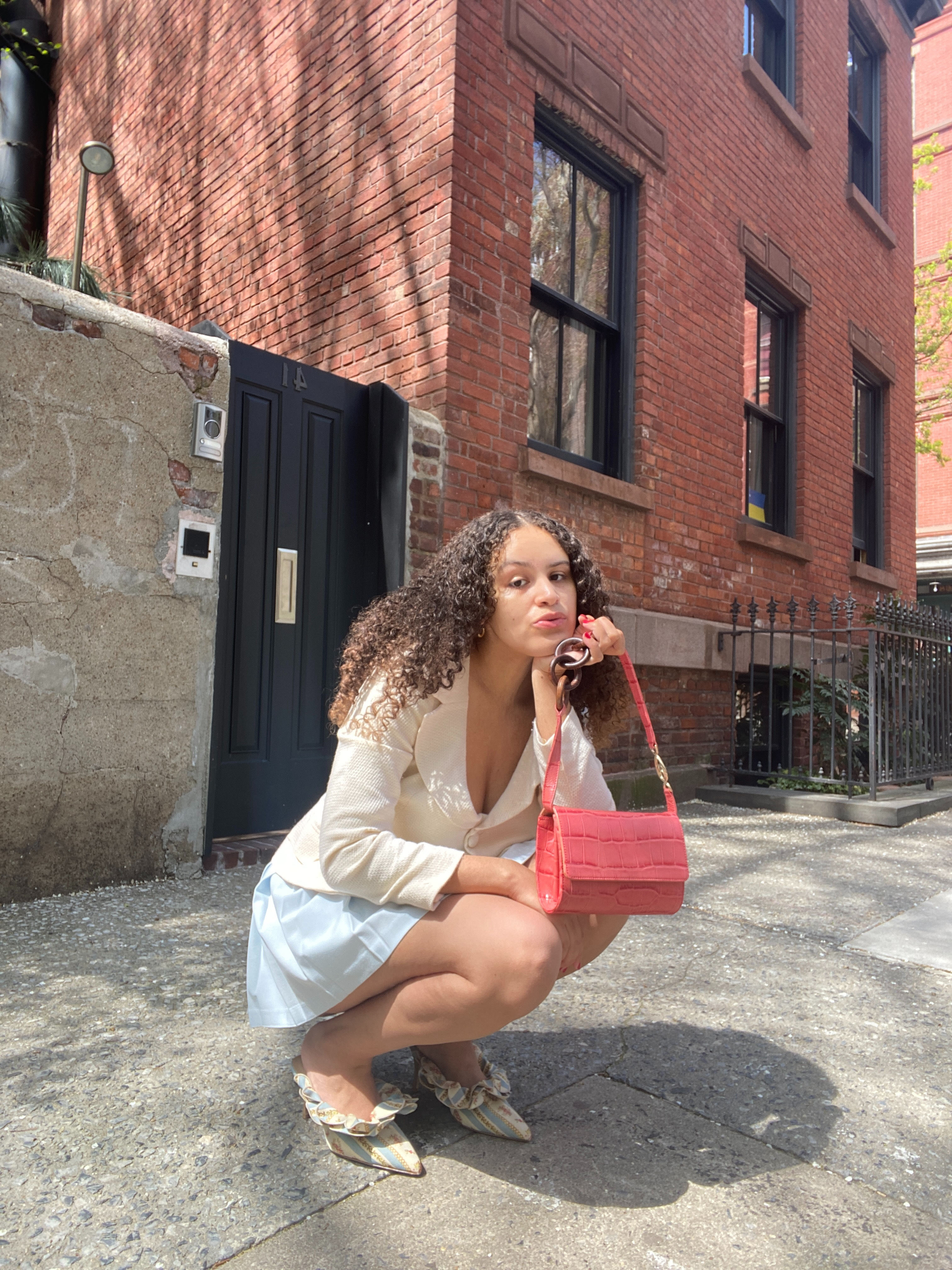
Jasmine Fox-Suliaman is a freelance writer and editor living in New York City. What began as a pastime (blogging on Tumblr) transformed into a lifelong passion for unveiling the connection between fashion and culture on the internet and in real life. Over the last decade, she's melded her extensive edit and social background to various on-staff positions at Who What Wear, MyDomaine, and Byrdie. More recently, she’s become a freelance contributor to other publications including Vogue, Editorialist, and The Cut. Off the clock, you can find her clutching her cell phone as she's constantly scrolling through TikTok and The RealReal, in search of the next cool thing.
-
 The Pro Golfer and Vintage Miu Miu Collector Transforming F1 Paddocks Into Runways
The Pro Golfer and Vintage Miu Miu Collector Transforming F1 Paddocks Into RunwaysSpotted: JW Anderson's pigeon bag, Tabi pumps, and the iconic Hermès Bolide on Wheels.
-
 George Russell on Growing Into His Personal Style
George Russell on Growing Into His Personal StyleThe five-time race winner talks watches, paddock 'fits, and finding confidence in fashion.
-
 From Paddock 'Fits to On-Track Rivalries: Go Sports Dives Into F1 Ahead of the 2025 LVGP
From Paddock 'Fits to On-Track Rivalries: Go Sports Dives Into F1 Ahead of the 2025 LVGPRead up before lights out on Saturday night.
-
 Alexa Chung's World: Her Best-Selling Madewell Collab, Personal Style Icons, and Spiciest Fashion Takes
Alexa Chung's World: Her Best-Selling Madewell Collab, Personal Style Icons, and Spiciest Fashion TakesPlus, what she's reading and listening to and her favorite spots in London.
-
 In a World of Shrinking Size Inclusivity, Eloquii Stands Larger Than Ever
In a World of Shrinking Size Inclusivity, Eloquii Stands Larger Than EverWelcome to the Eloquiissance.
-
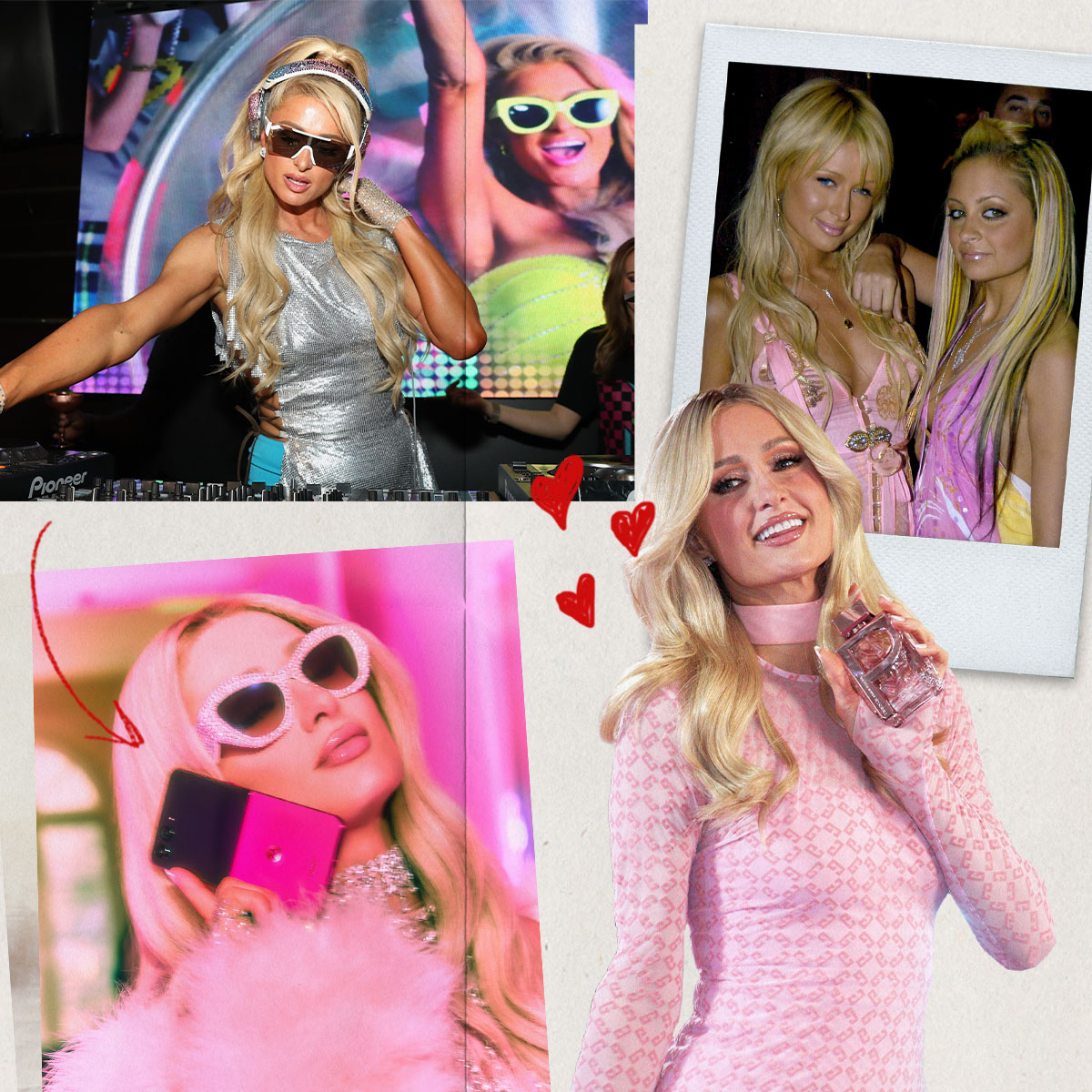 Paris Hilton's World: Her Pink Motorola Razr, Favorite Y2K Looks, and What 11:11 Media Means to Her
Paris Hilton's World: Her Pink Motorola Razr, Favorite Y2K Looks, and What 11:11 Media Means to HerA glimpse into the life of this savvy entrepreneur.
-
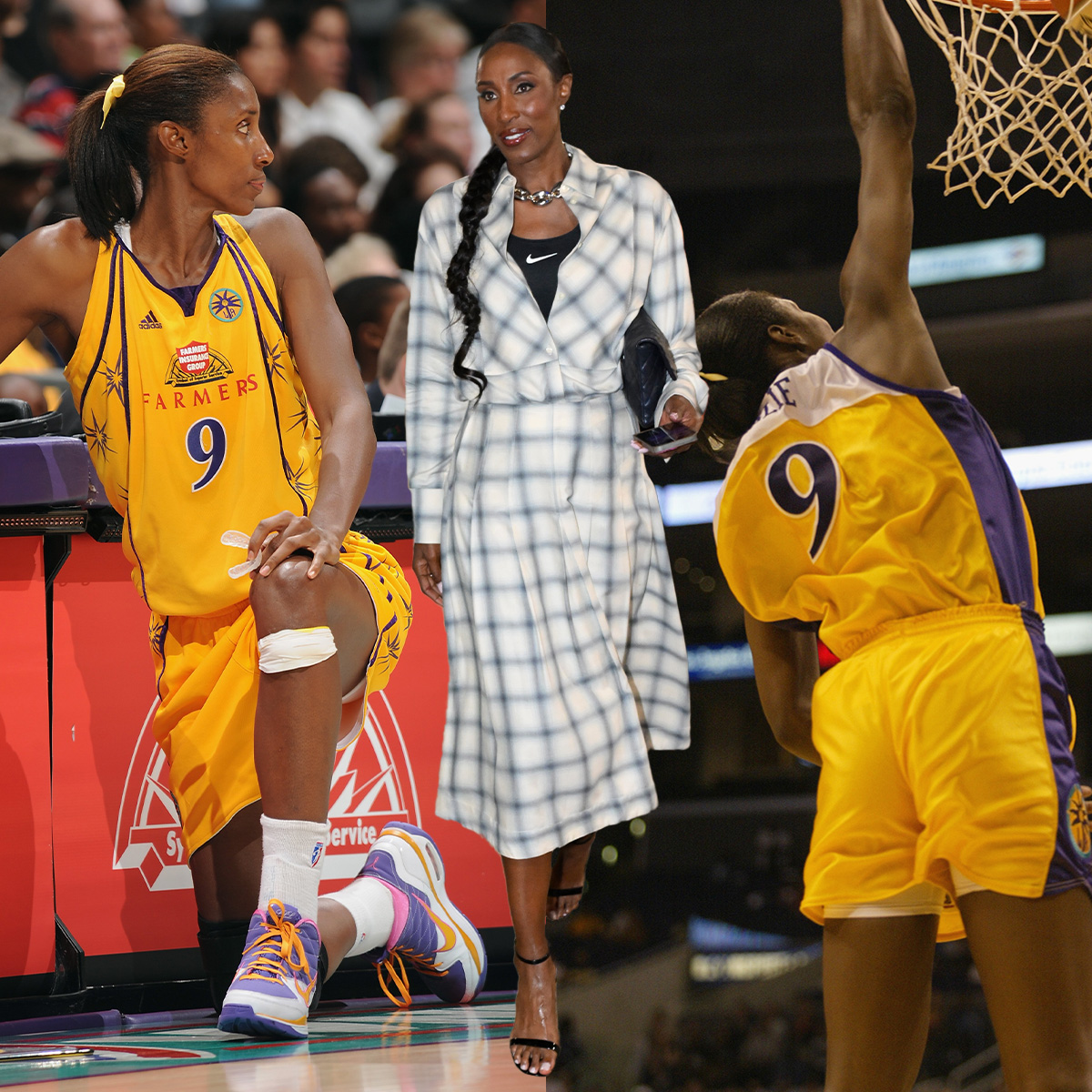 Lisa Leslie Is Still an All-WNBA First Team Dresser
Lisa Leslie Is Still an All-WNBA First Team DresserI sat down with the three-time MVP at Café Kallmeyer, an event hosted by Kallmeyer and Nike during the 2025 WNBA All-Star weekend.
-
 From Milan to Chișinău: Meet the 8 Designers That Make Up Fashion's New Guard in 2025
From Milan to Chișinău: Meet the 8 Designers That Make Up Fashion's New Guard in 2025We spoke with some of the industry's rising stars from around the world.

